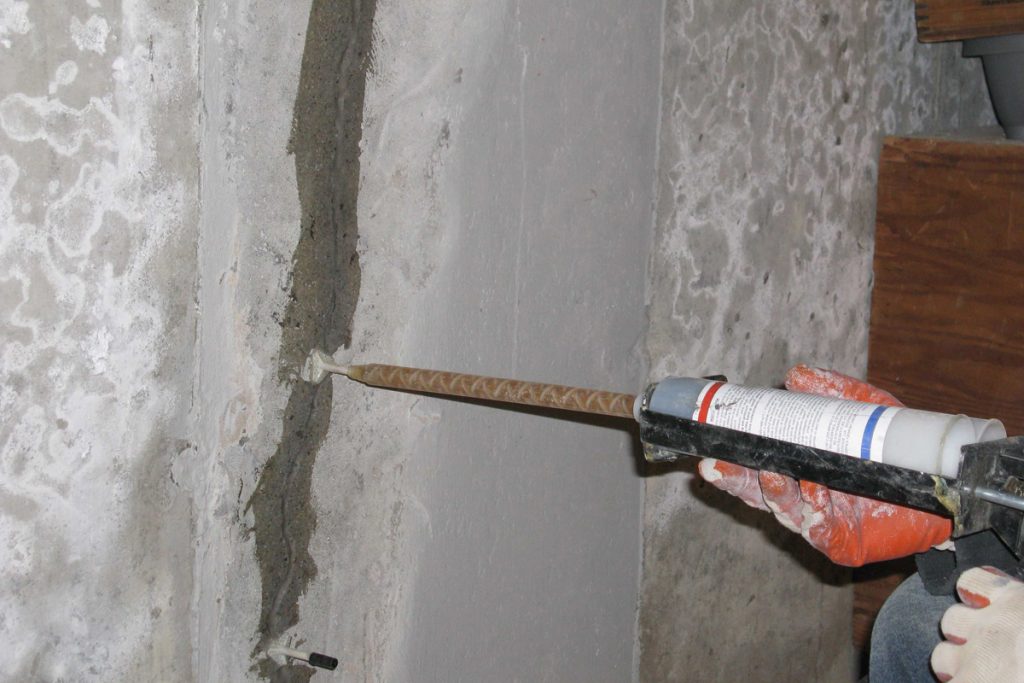The most common question we are asked when consulting with clients about basement leaks is “what is the best way to waterproof a basement?” Naturally, as a client, you want to know that the service you are paying for is the right type of repair for the problem you have and that it will be a permanent repair.
When determining what the best way to waterproof a basement is, we have several factors that need to be considered. These factors include, but are not limited to:
- The type of foundation
- The source of the leak
- Interior/exterior accessibility
- Cost; and
- The condition of the foundation
Why the foundation type matters
In order to determine the best way to waterproof a basement we must first consider what type of foundation we are dealing with as different foundation types present different repair options.
Poured concrete foundations
For a poured concrete foundation we typically have two options when it comes to waterproofing a basement. We can either waterproof from the outside or from the inside. Exterior waterproofing involves the excavation of the suspected crack/area and repairing it by installing a rubberized membrane or coating over the leak, thus making the foundation wall impermeable to moisture. Alternatively, poured concrete foundation leaks can be done from the inside by way of pressurized injection. Injection refers to the method of injecting a waterproofing material into a void (crack, tie rod hole, etc.) and filling it throughout the wall, thus eliminating the cavity in the first place.
Some companies employ methods of sealing cracks by draining water beneath the basement floor. We do not recommend this as it increase the amount of water pressure beneath the floor as well as promoting deterioration of the concrete wall.
Concrete Block Foundations
This type of foundation is comprised of courses of hollow blocks and mortar. This means that injection would not be a viable option for repair since the material would not be able to be contained in a controlled manner. Therefore, we would either have to repair externally in a similar fashion to a poured concrete foundation or seek an internal alternative for repair.
To waterproof a concrete block foundation leak internally we would use a different approach. Since we cannot coat the interior of the wall as that would cause water to be trapped in the block and lead to deterioration, we would have to install an interior perimeter drain system. An interior perimeter drain system runs along the footing capturing water from the perimeter walls and redirects the it to a sump pump for evacuation.
Source of the Leak and Condition of the Foundation
The source of the leak is very important when determining the type of repair required. For instance: water entering a crack can be repaired by injection. However, water that appears through the joint between the floor and the wall presents a different problem altogether and thus would require a different method of repair.
If a foundation leak is ignored for extended periods of time deterioration of the concrete will occur and compromise the integrity of the foundation wall. The condition of the concrete would dictate the method of injection or if exterior waterproofing is required. If you want to prevent your foundation from deteriorating over time the only way you can protect it from the environment is to waterproof it from the outside. This will guarantee that it is no longer exposed to exterior moisture. However, for most houses it is unnecessary to waterproof the whole foundation from the exterior as basement leaks are typically confined to limited areas. Typically, exterior waterproofing of concrete block walls stops ongoing deterioration of the blocks. Crack injection of poured concrete fills voids and returns the foundation to its original leak-free state.
Accessibility
Accessibility plays a very important role in determining the method of repair for a basement leak. Unfinished basements allow virtually unfettered access to repair most basement leaks from the inside with the exception of leaks behind the electrical panel.
When a basement is finished, a decision has to be made as to whether or not the wall is to be opened. Many homeowners are discouraged by the idea of disrupting areas of their finished basement to conduct foundation repairs. However, when leaks occur in a finished basement you must take into consideration the amount of damage water can do. If the drywall has gotten wet, moisture will be trapped and mold could begin to grow. Therefore, it is typically in your best interest to remove the drywall in the first place.
The cost of basement waterproofing repairs
It is also important to note that interior waterproofing repairs generally cost less than half the cost of repairing a leak externally. This is because less labour is involved and there is immediate access to the area of the basement that is leaking. When dealing with cracks in particular, if you excavate a portion of the wall to expose a crack for waterproofing purposes, it is not always entirely visible depending on the thickness of the crack. This makes it difficult to determine if the crack has been properly sealed externally. Furthermore, the adherence of exterior waterproofing membranes is dependent on the temperature and how dry the concrete wall is. When a wall is excavated it usually retains a lot of moisture from the soil, this damp wall does not dry quickly even with the use of a torch. If the job is rushed and the concrete is not permitted to dry properly this can lead to failure of an expensive exterior waterproofing attempt.
Aquaguard Injection & Waterproofing® is a full service basement waterproofing company. Contact us to today to discuss the best way to waterproof a basement; we offer all of the professional basement waterproofing methods.
